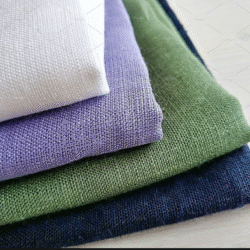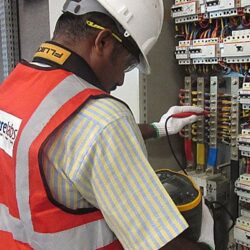
Boswellia neglecta is a fascinating tree species known for its aromatic resin and ability to survive in harsh, dry conditions. Native to parts of Africa and Arabia, this species is now found in arid regions such as Dubai, where it adapts well to the local climate. The tree is part of the Burseraceae family, which includes other well-known frankincense-producing species.
In Dubai, where sustainability and ecological landscaping are gaining importance, Boswellia neglecta in Dubai stands out for its resilience and low water requirements. It is increasingly recognized for its environmental benefits, aesthetic value, and potential medicinal uses.
Physical Characteristics of Boswellia neglecta
Tree Structure and Appearance
Boswellia neglecta is a small to medium-sized deciduous tree. It grows up to 7 meters tall and has a distinctive peeling bark that reveals a greenish inner layer. The branches are irregular, giving the tree a unique silhouette that makes it visually appealing in desert landscapes.
Leaves and Flowers
The leaves of Boswellia neglecta are compound and arranged alternately on the stems. They are bright green during the growing season and shed during extreme heat or drought. The tree produces small white or pale-yellow flowers that attract pollinators, helping maintain biodiversity in its habitat.
Resin Production
One of the most notable features of Boswellia neglecta is its resin, which is often referred to as frankincense or olibanum. The resin exudes naturally from the bark or through small cuts. It hardens into a fragrant gum that has been used for centuries in perfumes, incense, and traditional medicine.
Natural Habitat and Growth Conditions
Native Environment
In its natural range, Boswellia neglecta thrives in dry, rocky hillsides and semi-arid zones. It is commonly found in Somalia, Ethiopia, and parts of Kenya. The species is well-suited to environments with limited rainfall and high temperatures, which makes it ideal for cultivation in Dubai.
Adaptation to Dubai’s Climate
Dubai’s arid climate, characterized by long summers and minimal rainfall, creates challenges for most plants. However, Boswellia neglecta’s drought tolerance makes it an excellent choice for the region. It requires minimal irrigation once established and grows well in sandy or rocky soil. Urban planners and landscape designers in Dubai are increasingly incorporating such hardy native and semi-native species to promote sustainable green spaces.
Ecological and Environmental Importance
Soil Stabilization and Desert Landscaping
Boswellia neglecta contributes to soil stabilization in desert landscapes. Its deep root system prevents soil erosion, especially in sloped or rocky terrains. In Dubai, where wind erosion and sand movement are common, this tree helps maintain soil integrity and supports long-term land conservation.
Habitat for Wildlife
Although desert ecosystems are sparse, Boswellia neglecta provides shade, shelter, and food for small insects and birds. Its flowers attract pollinators, supporting the delicate balance of desert biodiversity.
Sustainable Landscaping Benefits
Due to its low water requirements and ability to thrive without chemical fertilizers, Boswellia neglecta fits perfectly into Dubai’s sustainability goals. The city’s push toward xeriscaping—using plants that need minimal irrigation—aligns with the ecological role of this resilient species.
Traditional and Medicinal Uses
Resin and Its Applications
The resin of Boswellia neglecta has long been valued for its aromatic and medicinal properties. When burned, it releases a pleasant fragrance commonly used in incense and traditional rituals. In herbal medicine, the resin is used for its potential anti-inflammatory and antimicrobial effects.
Local and Historical Significance
Throughout history, frankincense has played an essential role in trade and cultural practices across the Arabian Peninsula. Boswellia neglecta’s resin was among the varieties exported along ancient trade routes, linking Africa and Arabia. Its presence in Dubai reflects this deep historical connection to the region’s natural heritage.
Modern Research and Uses
Recent studies suggest that compounds extracted from Boswellia neglecta resin may have therapeutic potential. Researchers are exploring its use in treating respiratory issues, joint pain, and skin conditions. Though still under study, the growing scientific interest adds to the importance of preserving this species.
Cultivation and Care in Dubai
Planting Conditions
To cultivate Boswellia neglecta in Dubai, selecting the right site is crucial. The tree prefers well-drained sandy or rocky soil and requires full sunlight. It can be planted from seedlings or cuttings, though it grows slowly during the first few years.
Watering and Maintenance
While Boswellia neglecta is drought-tolerant, it needs regular watering during its early growth stage. Once established, it can survive with minimal irrigation. Overwatering should be avoided, as it can damage the roots. Routine pruning helps maintain shape and remove dead branches.
Pests and Protection
The tree is generally resistant to pests and diseases, which adds to its suitability for Dubai’s environment. However, like many desert species, it can be affected by fungal growth in overly moist conditions. Ensuring proper soil drainage is key to maintaining plant health.
Conservation and Sustainability
Threats to the Species
In some parts of its native range, Boswellia neglecta faces challenges such as overharvesting and habitat degradation. Excessive resin tapping without proper recovery periods can weaken the trees and reduce natural regeneration.
Conservation Efforts
Conservation initiatives are now focusing on sustainable harvesting practices and habitat protection. In Dubai, planting programs that incorporate resilient species like Boswellia neglecta support urban greening projects and help offset desertification.
Role in Sustainable Urban Design
Integrating Boswellia neglecta into Dubai’s urban design reflects the city’s commitment to environmental sustainability. From roadside plantations to public parks, this species adds both ecological and aesthetic value to urban areas while conserving water.
Conclusion
Boswellia neglecta represents more than just a desert tree—it is a symbol of resilience and natural beauty in arid environments. Its ability to thrive in Dubai’s climate, combined with its ecological, medicinal, and cultural importance, makes it a valuable addition to sustainable landscaping projects. As Dubai continues to develop green spaces with native and drought-tolerant plants, Boswellia neglecta stands as a model of balance between nature and urban life.




